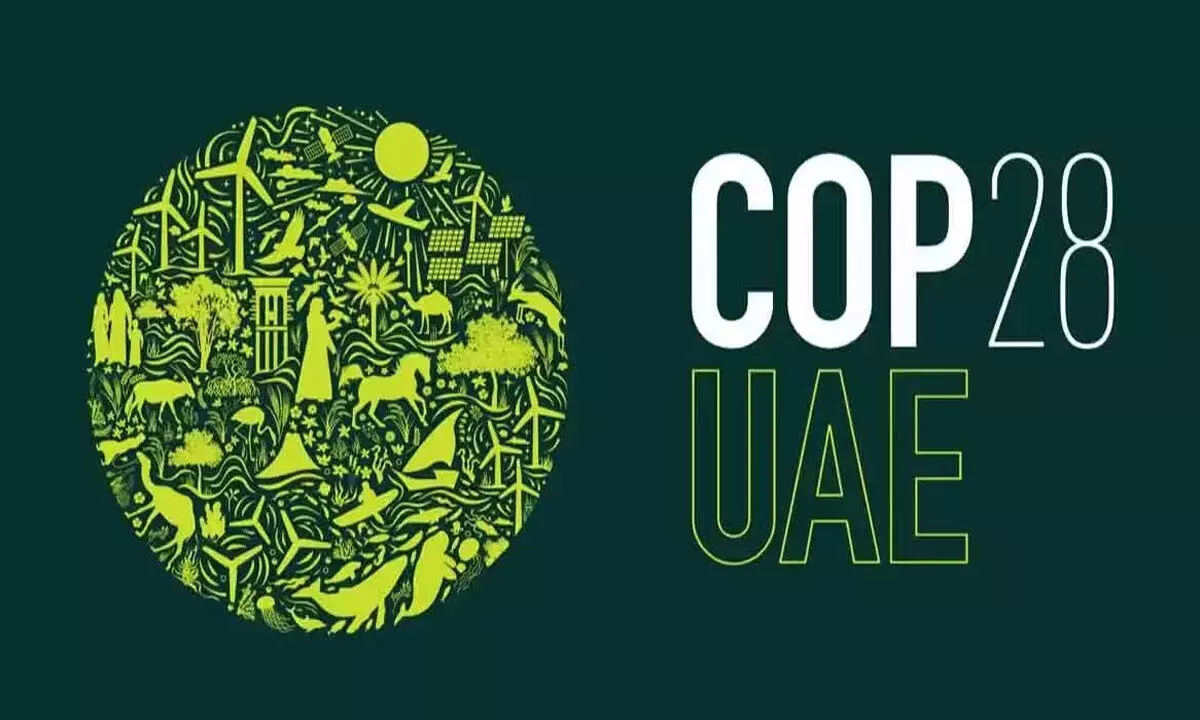Live
- They always want me to win, and now I feel lucky to have been offered a story like ‘Zebra’: Satyadev Kancharana
- ‘Democracy first, humanity first’: PM Modi in Guyana's parliament on two countries' similarities
- PKL Season 11: Telugu Titans register third straight win to top standings
- Is Pollution Contributing to Your COPD?
- NASA Unveils Underwater Robots for Exploring Jupiter's Moons
- Additional Central forces arrive in violence-hit Manipur
- AR Rahman and Saira Banu’s Divorce: Legal Insights into Common Issues in Bollywood Marriages
- 82.7 pc work completed in HPCL Rajasthan Refinery area: official
- Curfew relaxation extended in 5 Manipur districts on Friday
- Tab scam prompts Bengal govt to adopt caution over fund disbursement
Just In
Finally, climate finance a key focus at COP28


At a time when environmentalists are exulting over the historic movement on a crucial climate fund at the ongoing COP28 summit in Dubai, the stance of India and China, the largest greenhouse gas emitters after the US, may sound incongruous even as the year 2023 is set to be hottest year on record, recording calamitous events worldwide.
At a time whenenvironmentalistsare exulting over the historic movement on a crucial climate fund at the ongoing COP28 summit in Dubai, the stance of India and China, the largest greenhouse gas emitters after the US, may sound incongruous even as the year 2023 is set to be hottest year on record, recording calamitous events worldwide.
The summit has braved fraught discussions and approved the long-awaited ‘loss and damage fund’ to compensate developing nations for climate impacts. Before we dwell on this fund, let us go over why India, one of the key forces behind climate change mitigation efforts, refrained from signing the key
pledge at Dubai summit. The pledge requires member-nations to contribute to triple the world’s renewable energy capacity by 2030. As many as 118 countries endorsed the goals of the pledge to cut reliance on fossil fuels.
Even Pope Francis has called for end to fossil fuels in his address to the COP28.
However, India, despite facilitating consensus on green energy buildup during its G20 presidency, struck a discordant note that it would not be possible to raise the bar it set for itself any higher, given its helplessness to stay with fossil fuels. While realising more commitment could be attainable for smaller countries nations such as Japan, Australia, Canada, Chile, Brazil, Nigeria, and Barbados, it isnt so, for a billion people nation like India. The country is already on course to generating half of its electricity from non- fossil fuel sources by 2030 and achieving net-zero emissions by 2070, which are quite ambitious, and suffice given the appetite of its economy to guzzle more energy, which simply cannot be met by green and renewable energy.
As per a study, India needs coal for 73% of its energy needs, and is adding 17 gigawatts of coal-based power capacity as its energy demand spirals. Coal is, and would, remain an important part of India’s energy needs. Given this predicament, India and China call out the hypocrisy of the developed nations like US and France to push for more green pledges – after consuming more than half of the available carbon resources. There appears to be a move even to seek a halt to private financing for coal-fired power plants at the COP28.
What India proposes, instead, is a clear roadmap on climate finance as well as green technology transfer. Meanwhile, UAE’s COP28 president Sultan Al Jaber said his country has pledged $100 million to the ‘loss and damage fund’ and so did Germany. Contrast this with the actual needs estimated to be around $400 billion per annum. Add to another $4 trillion annual gap in funding needed to meet the UN sustainable development goals. Global Stocktake, a report by the University of Delaware, shows climate change led to a GDP loss of about $1.5 trillion globally in 2022. Wealthier nations certainly need to do much more towards funds and technology. To sum it up, the world needs to do more, and urgently – to keep the global temperature rise to 1.5 degrees Celsius compared to the pre-industrial era as per the Paris Agreement of
2015. Support to the loss and damage fund, long sought by nations vulnerable to natural disasters, on Day 1 of the summit does send a positive signal to the world. Concern and commitment can deliver. It is heartening that a petro state like the UAE, the COP28 president, has asserted no issue is off table, even the role of fossil fuels.

© 2024 Hyderabad Media House Limited/The Hans India. All rights reserved. Powered by hocalwire.com






